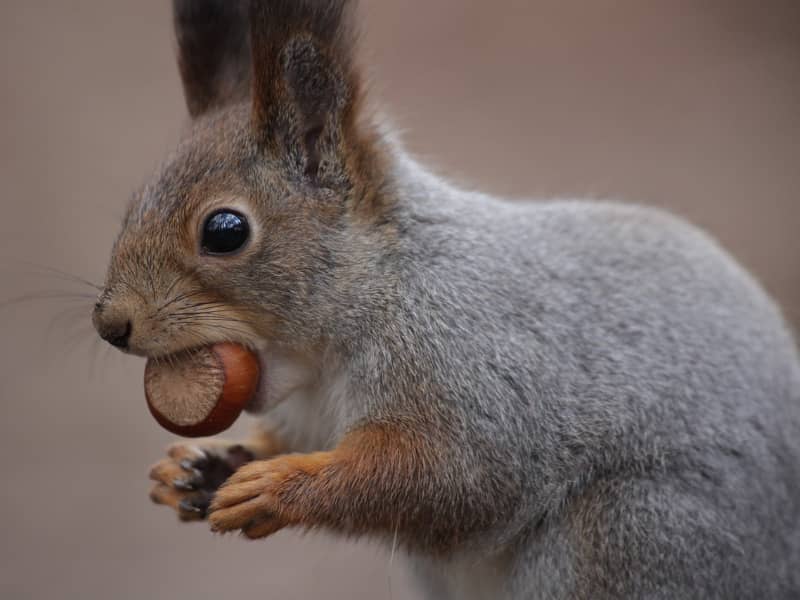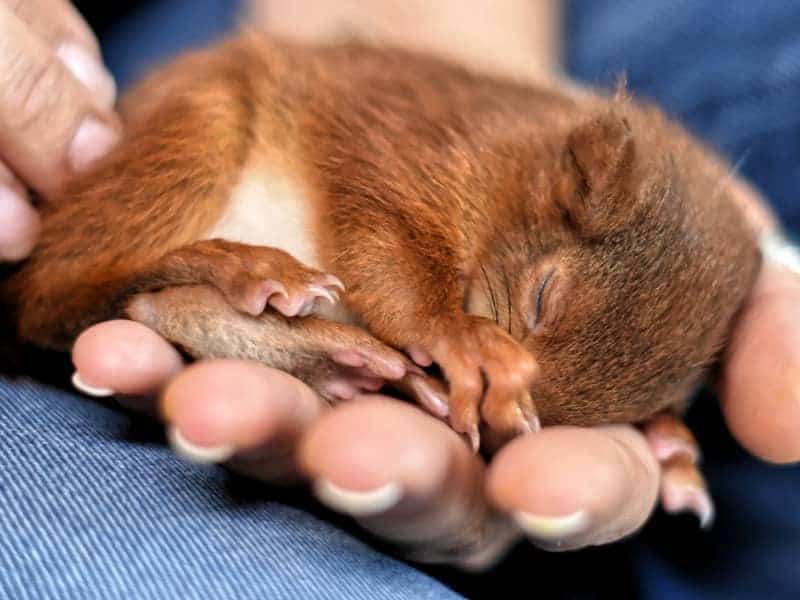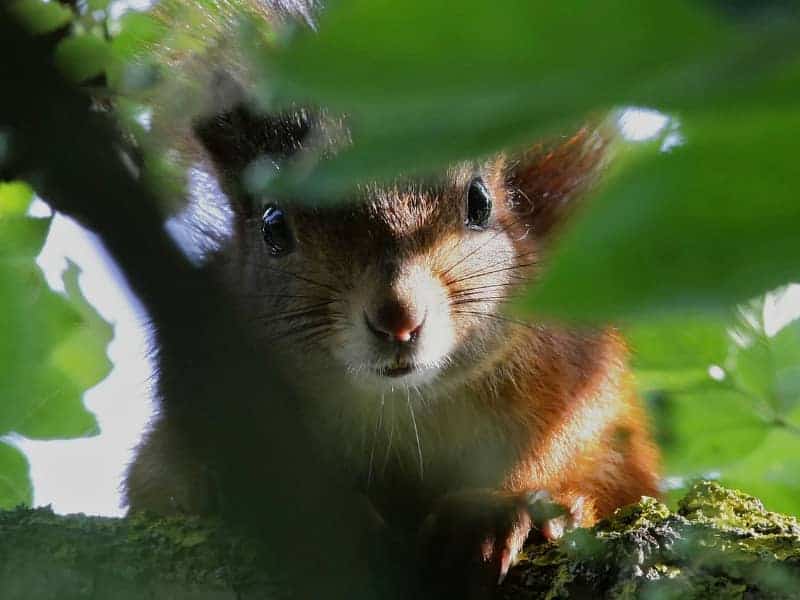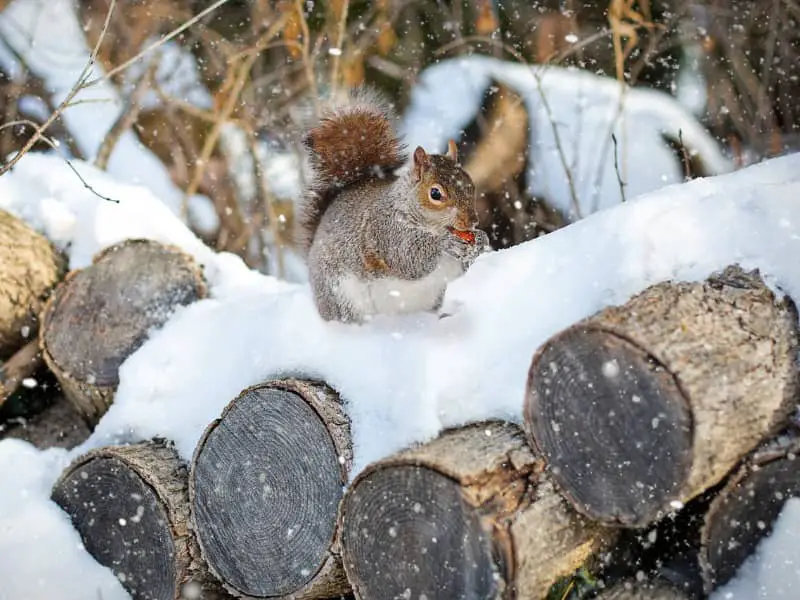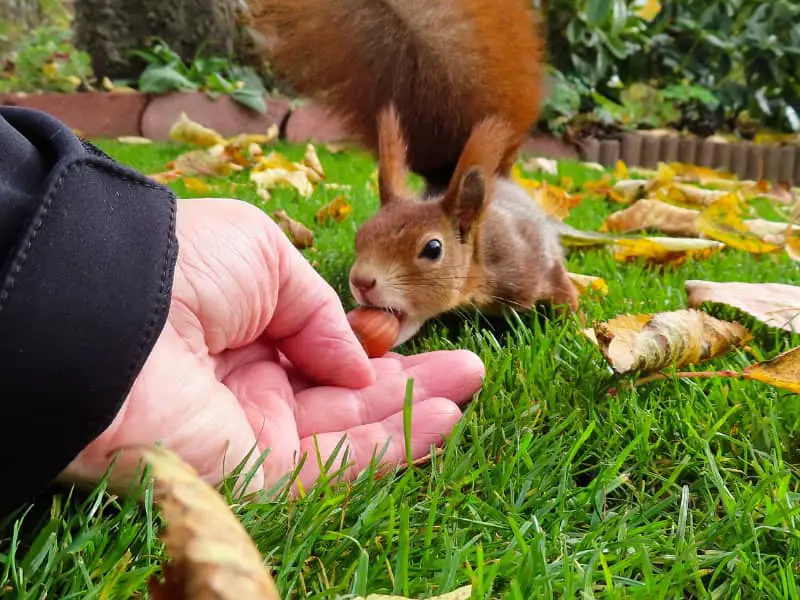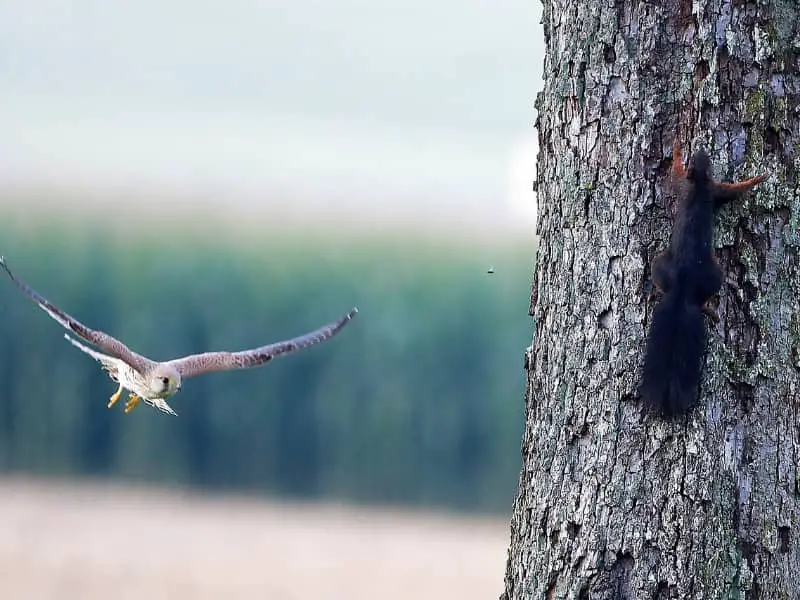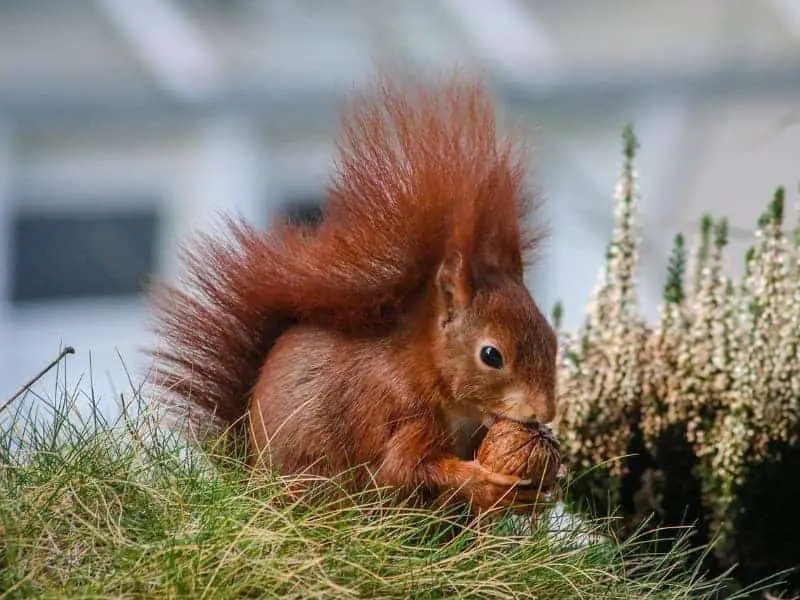
Squirrel parasites
Basically, squirrel parasites are harmless to humans. Certainly it can happen that mites or fleas make a detour on humans, but they will hardly stay there. The guide gives you an insight into the field of squirrel parasites and diseases.
Harmless parasites of a squirrel
If you were bitten by a flea, you cannot necessarily assume squirrel parasites. Such a bite is just as unspectacular as a mosquito bite. After a flea bite, it is usually sufficient to change your clothes and take a long shower. Afterwards, the clothes should be washed.
The most common squirrel parasites
We would like to describe the most common parasites here so that you can get a better insight.
Fly eggs and maggots
Especially young animals or even a weakened squirrel is very often visited by flies in midsummer. The flies then lay their eggs in the squirrel's fur. You can recognize fly eggs by their white-yellow color and oval shape. They broadly resemble sawdust, which is always deposited in packets deep in the animal's fur. Very often affected are the tail, hind legs and head.
You can help the squirrel only if you can remove all the eggs as soon as possible by intensive combing or collecting. As soon as the maggots have hatched, they invade all body orifices of the rodent. If it has come this far, then any help will be too late for the squirrel.
The trip to the vet becomes necessary when
- the flies are supposedly empty
- Maggots are recognizable
- open wounds as well as fly eggs are visible
Fleas
You can recognize them as small brown and egg-shaped creepy-crawlies in the fur. They often appear and then disappear again in the fur.
Most squirrels tolerate flea medication only poorly or not at all. Therefore, you can only comb out the fleas or collect them by hand. Immediately squeeze the removed fleas. This way you can gradually rid the squirrel of fleas.
If there are too many fleas and you also discover coagulated blood in the squirrel's fur, you must immediately go to a vet. He may be able to do something with an antiparasitic.
Ticks
In a squirrel these parasites are much smaller than you know it from dog or cat. Often the ticks are only the size of a pinhead and beige. Only later they become grayish shiny by the sucked blood. Since ticks can suck blood everywhere, they usually bite the squirrel on hairless areas such as lips, eyelids, behind the ears and on the neck.
Ticks must be removed immediately with tweezers. You can do it yourself or take it to a vet.
Hair lice
These squirrel parasites are more or less scale-like and indefinable crumbs that you will find on squirrel's documents. If the infestation is very large, then this is a clear indication of a severely weakened squirrel. Further treatment can usually only be done by a veterinarian.
Mites
You can hardly recognize these eight-legged arachnids. You notice an infestation only by the consequences, such as thickened and crusty ear edges and auricles, scabby coatings between the toes and at the excretory openings. In case of a very strong infestation, you will notice it by a foul and putrid smell.
Here you need to go to a vet in any case. You can soak the crusts with warm water and then carefully lift them off. In many cases pus is revealed underneath. Here, too, the veterinarian is the first point of contact.
Endoparasites (worms, coccidia)
In addition to exoparasites (mentioned above), squirrel parasites can also show up as worms or coccidia.
Whether the squirrel parasites are exoparasites or endoparasites is not important for you. In any case, you should consult a veterinarian.
What diseases can be transmitted by squirrels?
In some cases, the squirrel can become infected with leprosy germs. These, in turn, can make humans sick. Two types of bacteria have so far been found in squirrels through infectious diseases.
Author

-
Garden animal - A life with nature
Welcome to my animal blog! My name is Dirk and I am happy to take you on my journey through the fascinating world of animals and gardening.
Born 54 years ago, I have had an insatiable curiosity for the animal world around me since childhood. Although I have moved professionally in other industries, my true passion has always been animals and nature. It is remarkable how a small garden has become such an important part of my life.
Many of my fondest memories are associated with the animals that share our home. Whether it's the curious squirrels that scurry across the trees in the morning, the colorful variety of birds that visit our feeders, or the busy bees and butterflies that pollinate our flowers, every moment with them is invaluable to me.
This blog is my contribution to share my experiences, discoveries and insights with like-minded people. Here I will share stories of unforgettable encounters with animals, give tips on gardening and creating wildlife-friendly habitats, and take you on my journeys through nature.
Thank you so much for being here!
Cordial,
Dirk aka garden animal
Last posts
- 27. February 2024PetsVeganes Hundefutter – Grün und Gesund?
- 18. January 2024ChickensOregano für Hühner
- November 27, 2023HamsterDiurnal hamsters
- November 24, 2023HamsterHamster hammock

